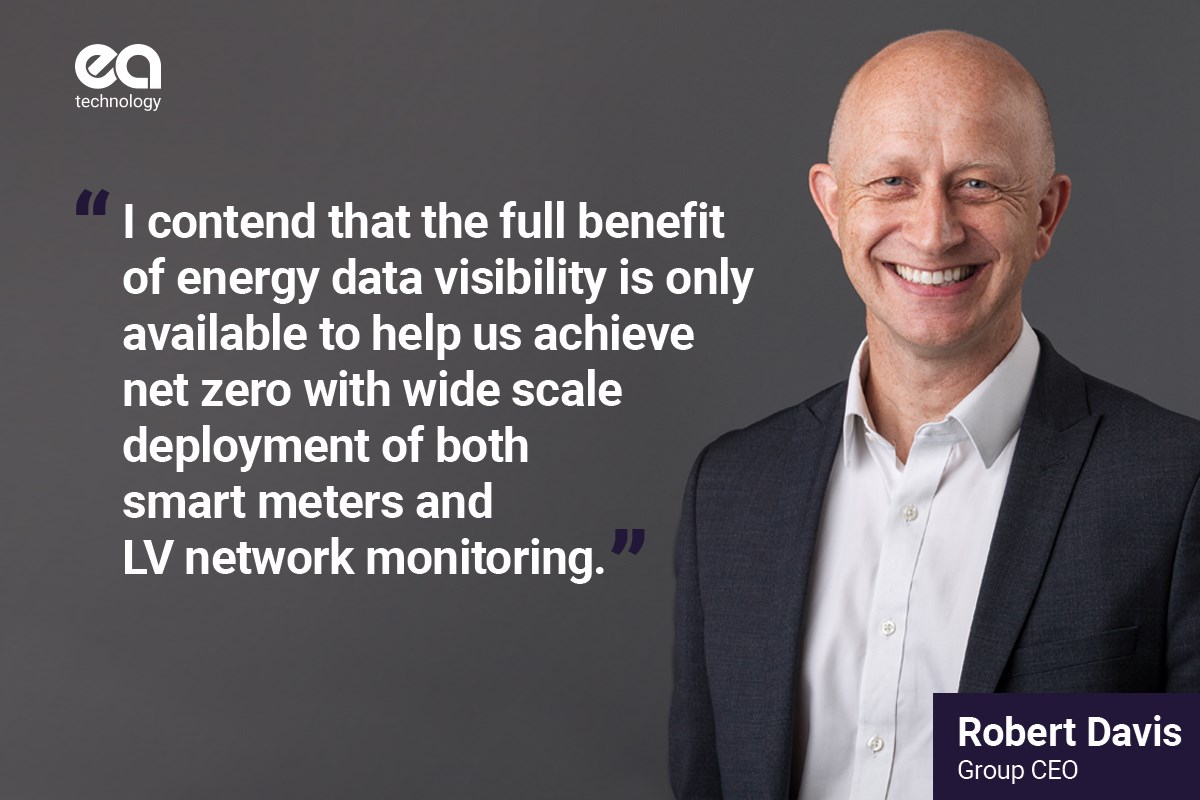Smart Metering vs LV Network Monitoring
-
16 August 2021
-
Robert Davis

I’d like to address the question of whether smart meters and LV network monitors are complementary or duplicative.
To get my own cards on the table, I contend that the full benefit of energy data visibility, (flexibility, lower cost energy, full exploitation of green energy generation and storage ) is only available to help us achieve net zero with wide scale deployment of both.
Let me see if I can persuade you.
The smart meter argument was won years ago. A portal into the home to provide customers with visibility and choices just makes sense.
‘I can save how much by turning lights off’ Easy.
‘If I use my washer dryer at 8pm rather than tea time, I’ll save a fortune?’ No brainer.
Monitoring LV networks is increasingly making sense too, even just for improving network performance.
‘I can see in advance where and roughly when an LV cable will fail?’ Count me in.
‘I can see black spots where I don’t have mesh cover due to a fuse failure?’ Yes, please.
Where it gets more interesting is around network load management. Government reports have concluded that £billions can be saved by deferred or avoided network reinforcement costs if we can find ‘the perfect calm’. This means using the full capacity of a local circuit, but not beyond, by load shifting, Incentivising customers to move load to lower capacity periods, preferably through a fully automated system.
In theory, real time collation of smart meter data combined with detailed network capacity information could be synthesised to provide real time signalling to incentivise load shifting and thereby avoided costs. Until smart metering systems can operate at this level of sophistication, LV monitoring wins hands down on this front as they can do this now.
Similarly, network capacity constraints may exist at HV. Collating multiple LV monitoring data on a real time basis can already signal load shifting at a zonal level to reduce HV network constraints. In theory, again, collating smart metering data can achieve the same effect, though I suspect this is also some way off.
But even if smart metering gets there, will LV monitoring always be able to generate data, not available from smart metering but helpful to achieving net zero?
Other data points only available via LV monitoring include asset temperature readings, where real time rating of cables, for example, might allow rated capacity to be exceeded, whilst concurrently monitoring performance. Modelling of asset degradation under excess load conditions could even be given a monetary value for the degradation caused. There will definitely be a calculable value of enhanced asset ratings.
Power quality, reverse power flows and varying fault levels are all network performance metrics likely to become more important as increasing amounts of local generation and storage are deployed. Smart meters are not likely to be able to capture this data ever. Without it, network failure caused by net zero activity will be more prevalent.
So I summarise , for the sake of this piece, there are four types of data available from smart meters and LV network monitors:
- Smart meter exclusive data which can help shape consumer behaviour.
- Network data available from LV monitoring that will improve network performance irrespective of net zero activity.
- Network data which might be modelled from smart meter data in the future to help net zero activity, but doesn’t do so now, where LV monitoring can.
- Network data exclusively available from LV monitoring which will help net zero activity.
I therefore conclude that both methods of data collection are critical and wide-scale deployment of both is key.
Have I persuaded you?
